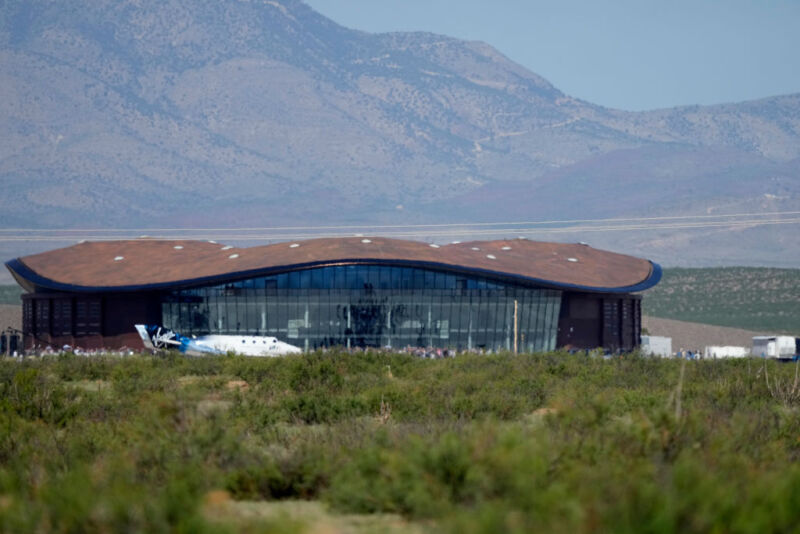
SPACEPORT AMERICA, New Mexico—I’m standing on a spaceport runway at the ass end of nowhere. The sun has started to creep over the craggy San Andreas Mountains, illuminating the massive, alien spaceship-like building here in New Mexico that Virgin Galactic calls home.
I have traveled all this way in early August to find a little illumination of my own. In particular, I want to know just what the heck Virgin Galactic is up to. Founded by Sir Richard Branson some 19 years ago, the company has had a wild ride in its quest to become the world’s first bona fide space tourism business. Along the way, Virgin Galactic’s stock soared as high as $56 a share, then crashed to now barely above $3. One of its spaceships crashed, too, nearly nine years ago, killing a test pilot. But now it’s moving forward in a positive direction.
Later on Thursday morning, with a stunning rocket blast initiated about 14 km above the New Mexico desert, the company completed its seventh flight to an altitude of 88 km, above the vast majority of Earth’s atmosphere. Most of the previous missions were test flights to push the envelope of the VSS Unity spacecraft’s capabilities. Thursday’s flight, dubbed Galactic 02, was actually the first time the company flew a private astronaut into space—and this is the reason Virgin Galactic exists, after all.
More than 1,000 people have bought tickets for the Virgin Galactic experience, which includes a few minutes of weightlessness after a one-minute rocket ride to the top of the world. The first several hundred paid $250,000 for their tickets more than 15 years ago, with the expectation of starting flights around 2010. One of them was on board the space plane Thursday.
This was Jon Goodwin, a British businessman who recently turned 80 years old. Goodwin purchased his ticket all the way back in 2005. He was just the fourth person to do so. But he has Parkinson’s’ disease and is running out of time. He knows it.
“The fact that I am now able to do this is completely magical,” he said. “Defying Parkinson’s is hopefully inspirational.”
He was joined on the flight by Keisha Schahaff and Anastatia Mayers, a Caribbean mother-daughter duo whose tickets were purchased by the nonprofit Space for Humanity in order to broaden access to space. So with this single mission, Virgin Galactic really did, at long last, start to fulfill its goals of broadening access to space.
It was a moment. But will it be a fleeting moment? What does Thursday’s successful flight actually mean? Does Virgin Galactic have a successful future? I came to New Mexico to find out.








